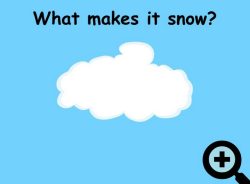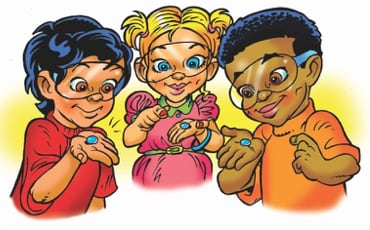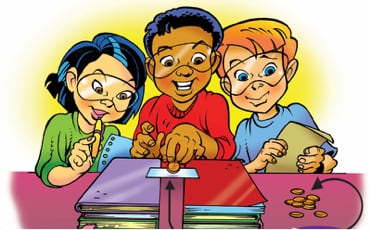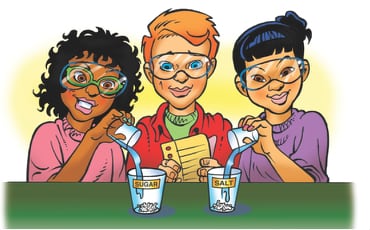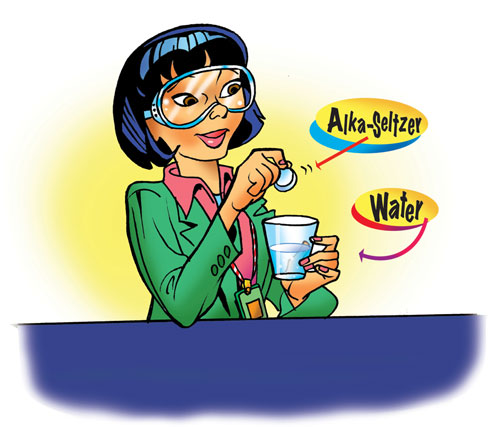Lesson Overview for Teachers
View the video below to see what you and your students will do in this lesson.
Downloadables:
Lesson Plan (PDF) | Teacher Background (PDF) | Connections to NGSS (PDF)
Objective
Students will be able to explain that snowflakes form from ice crystals in clouds. They will make a model to show the common six-sided structure of a snowflake. Students will also recognize snow as a solid form of water.
Key Concepts
- Clouds can be made up of either water droplets or a combination of water droplets and ice crystals.
- If the temperature is cold enough and there is enough moisture in the air, the ice crystals from the cloud can grow into snowflakes as they fall.
- Most snowflakes have six arms or branches with the same structure. This gives the snowflake symmetry.
NGSS Alignment
- K-ESS2-1: Use and share observations of local weather conditions to describe patterns over time.
The activities in this lesson focus on where and how snowflakes are formed. Students will understand the connection between clouds, temperature, ice crystals and snow, and will recognize the pattern of conditions necessary for snow to fall.
Summary
- Students are shown a video of snow falling and discuss their experiences in snow.
- Students discuss where they think snow comes from and how snowflakes are formed.
- Students see an animation of ice crystals in a cloud and a snowflake forming.
- Students see video of actual snowflakes forming and pictures of snowflakes with six similar branches or “arms.” Students then model the formation of a snowflake using cotton swabs.
Evaluation
There is no formal student activity sheet or assessment for this lesson. To evaluate student understanding, use your usual methods of interacting with students, asking questions, and discussing ideas with students as they participate in the different parts of the lesson.
Safety
No special safety precautions are necessary.
Materials
- Cotton swabs (18-24 per student)
- Construction paper
- Glue
Teacher Preparation
- Each student will need six whole cotton swabs. Break the remaining cotton swabs in half so that each student also receives 24-36 half-pieces of cotton swabs.
Engage
1. Have a discussion and show a video about what you see and feel when it snows.
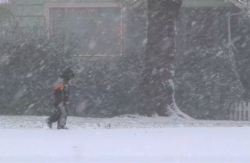
Show the video Snow falling.
Show snow pictures and ask students:
- What do you like to do in the snow?
Ask students:
- What’s the big difference between rain and snow?
Rain is a liquid. Snow is colder, is a solid, and looks white.
Ask students:
- Rain comes from clouds. Do you think snow also comes from clouds?
Yes. Students may say that the rain gets cold and turns into snow.
Explore/Explain
2. Show an animation to help explain where snowflakes come from and how they form.
Question to investigate: What makes it snow?
Show the animation Snow.
Explain that clouds are made of tiny droplets of water but that the droplets may also freeze to form tiny ice crystals. The ice crystals stay up and float in the cloud because they are so small and light. Each ice crystal has six sides. As more water freezes on it, the crystal gets heavy enough to fall. As the crystal falls, water continues to freeze on it creating a six-branched snowflake.
Extend
3. Show a video of a snowflake forming and photographs of snowflakes.
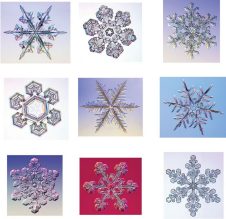
Show the video of snowflakes forming.
Show the photographs of snowflakes.
Ask students:
- Do you see anything that all the snowflakes have in common?
Six parts stick out. Each branch, or “arm,” that sticks out looks like the others.
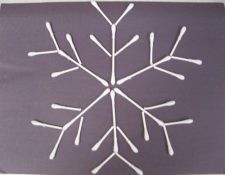
4. Guide students to make models of snowflakes using cotton swabs.
Materials for each student
- Construction paper
- Glue
- Whole cotton swabs (6)
- Cotton swab pieces that have been cut or broken in half (24 - 36 half-pieces)
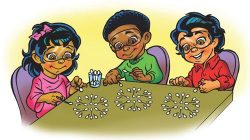
Procedure
- Remind students that asnowflake has six main branches or “arms.”
- Tell students to lay outtheir six whole cottonswabs in a way that looks like the main six parts of a snowflake.
- Students should then add the half-pieces of cotton swab so that each arm or branchis identical. The resulting snowflake should be symmetrical.
- Have students glue the cotton swabs onto the construction paper.
Recommended Books
The following books are excellent “read-alouds” to accompany this lesson about clouds and rain. When you choose to read any of the books as part of the lesson is up to your own personal preference.
- Snow by Uri Shulevitz
- The Snowy Day by Ezra Jack Keats
- Snow by Erin Edison
- Winter is for Snow by Robert Neubecker
- Snow by Grace Hansen


